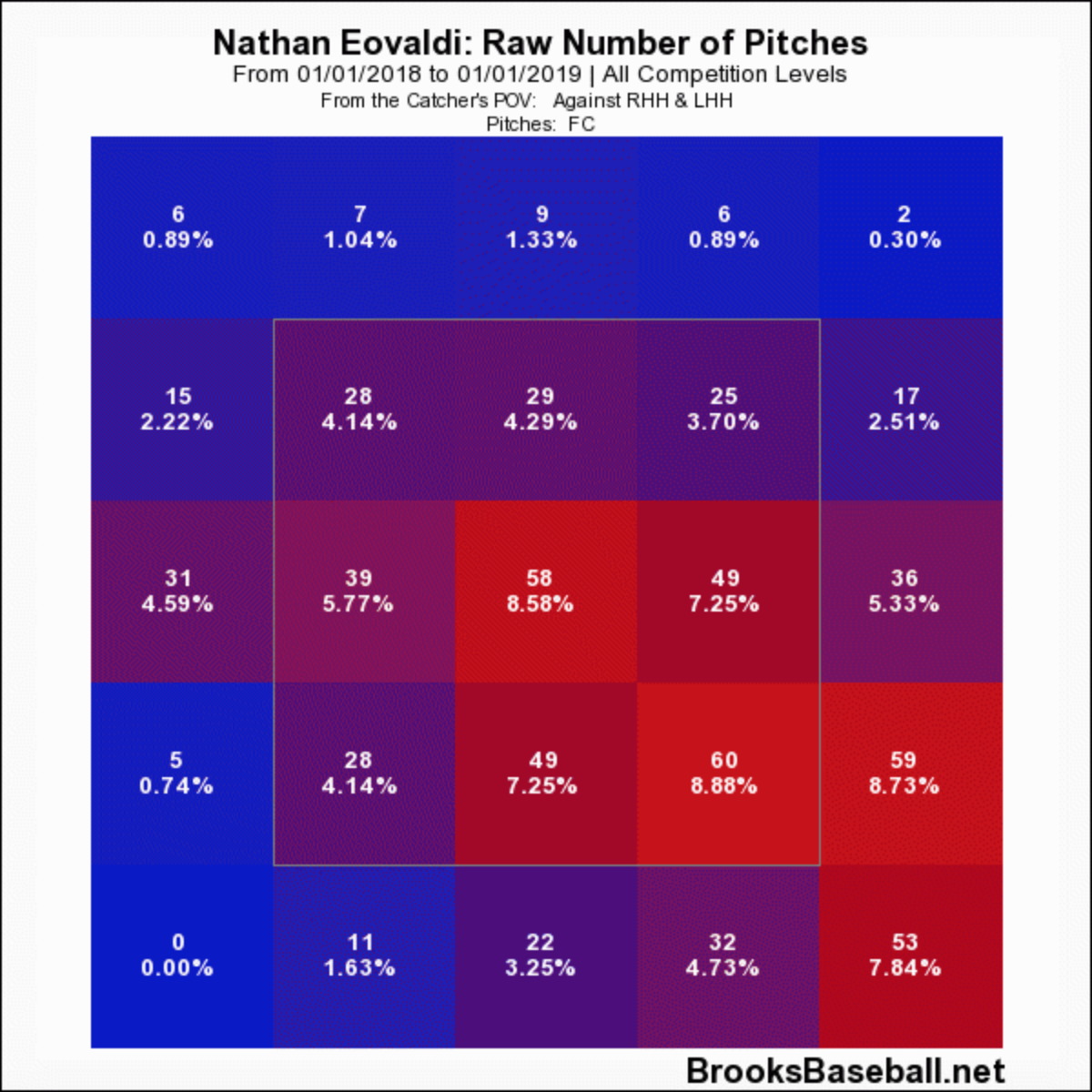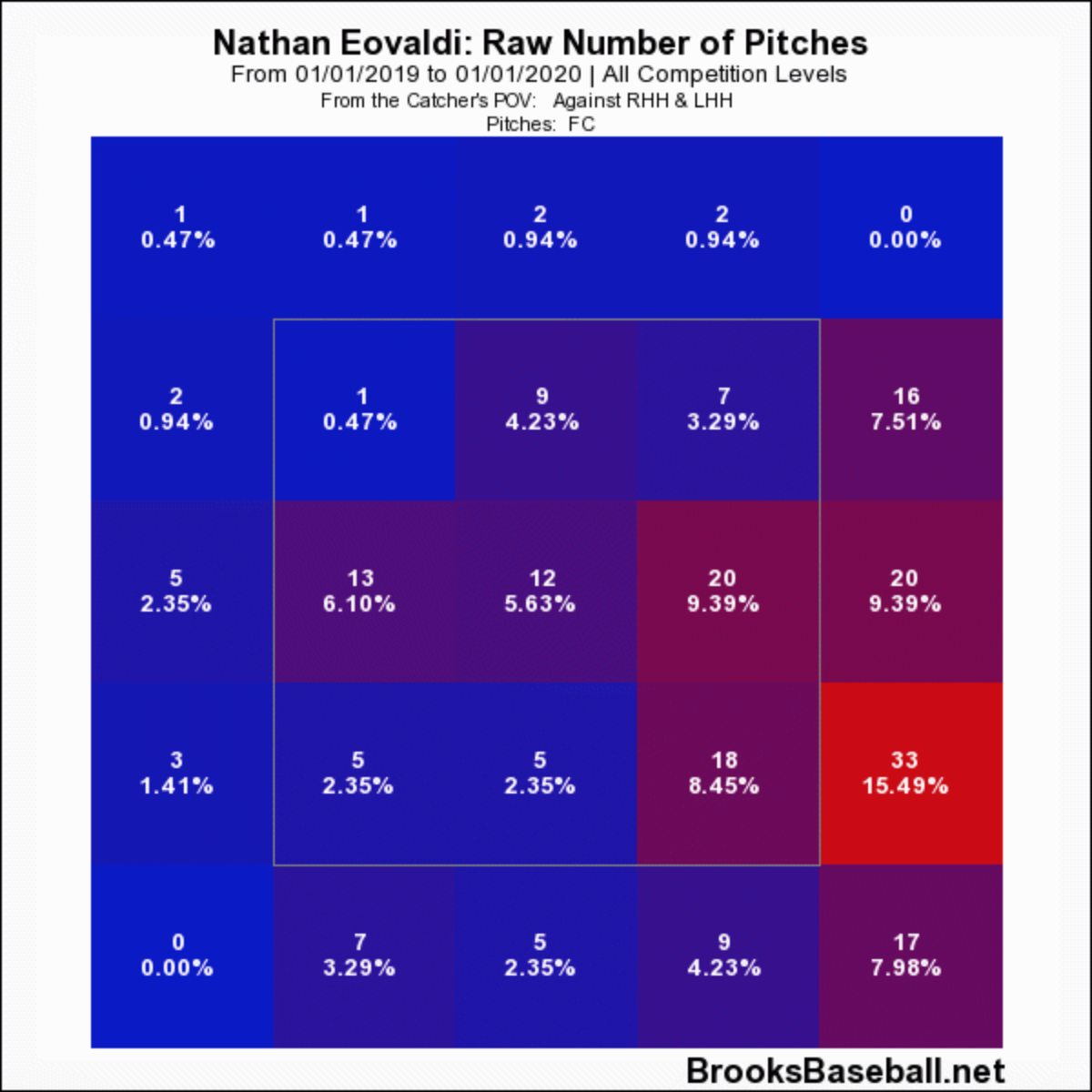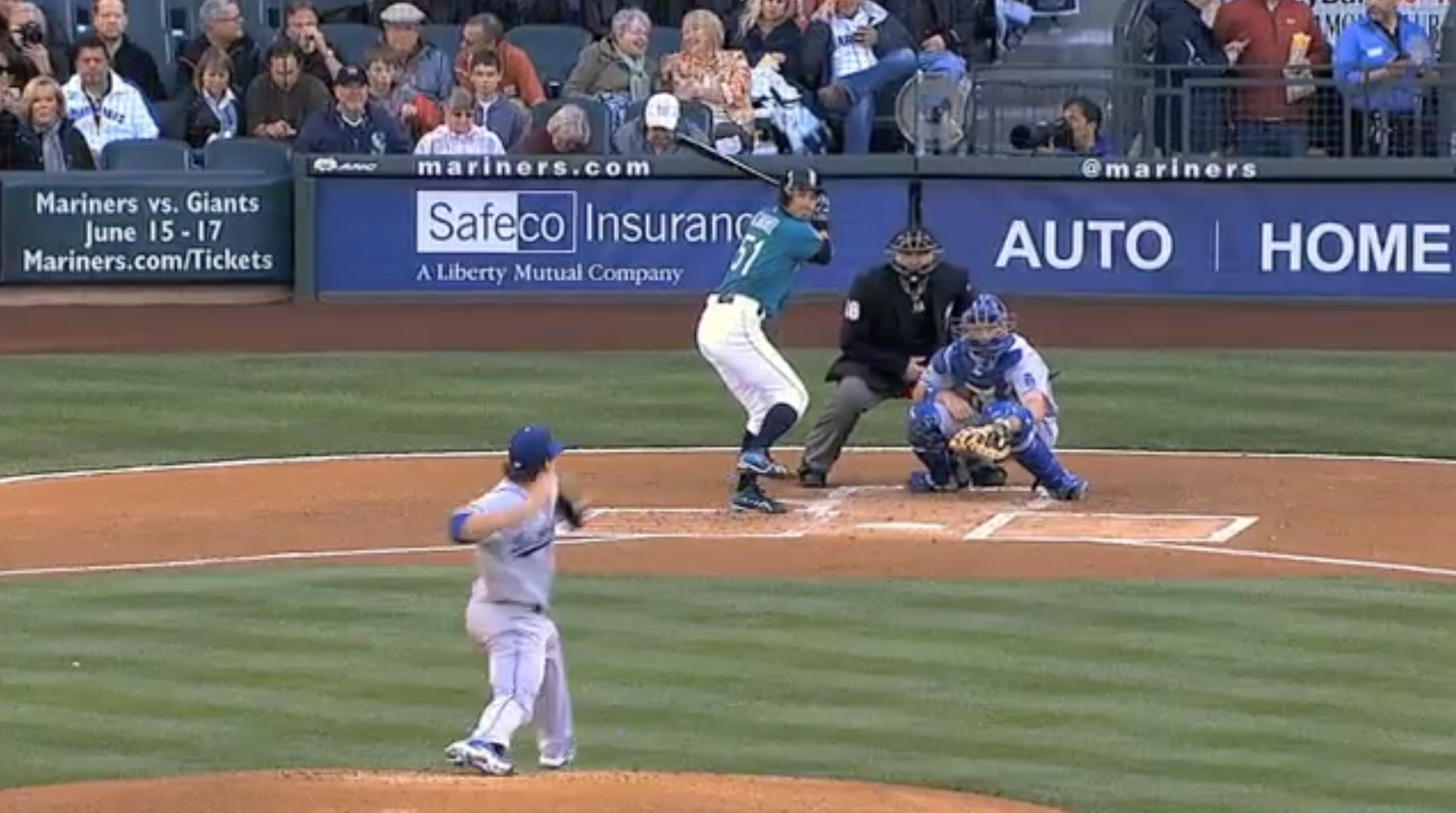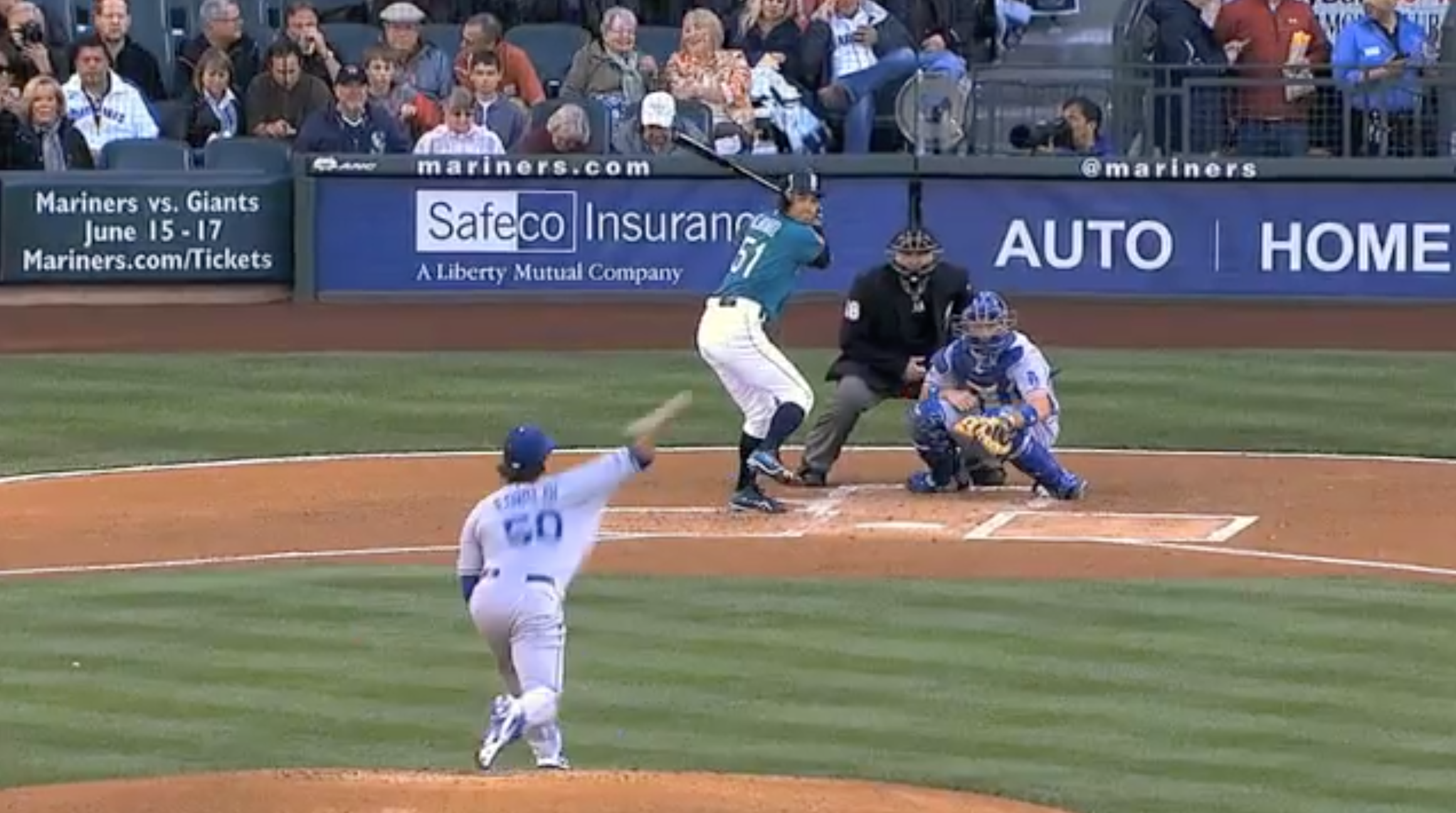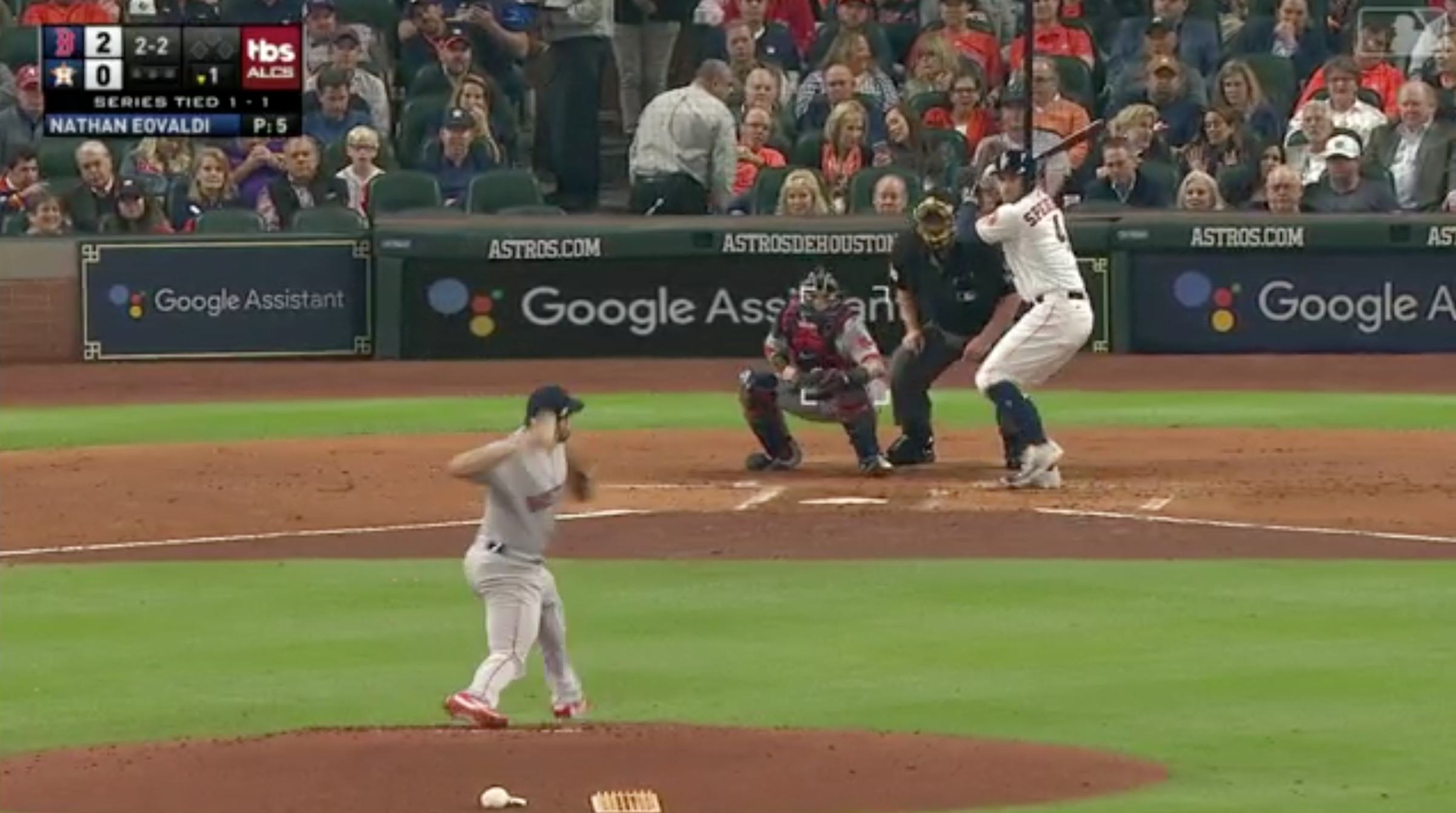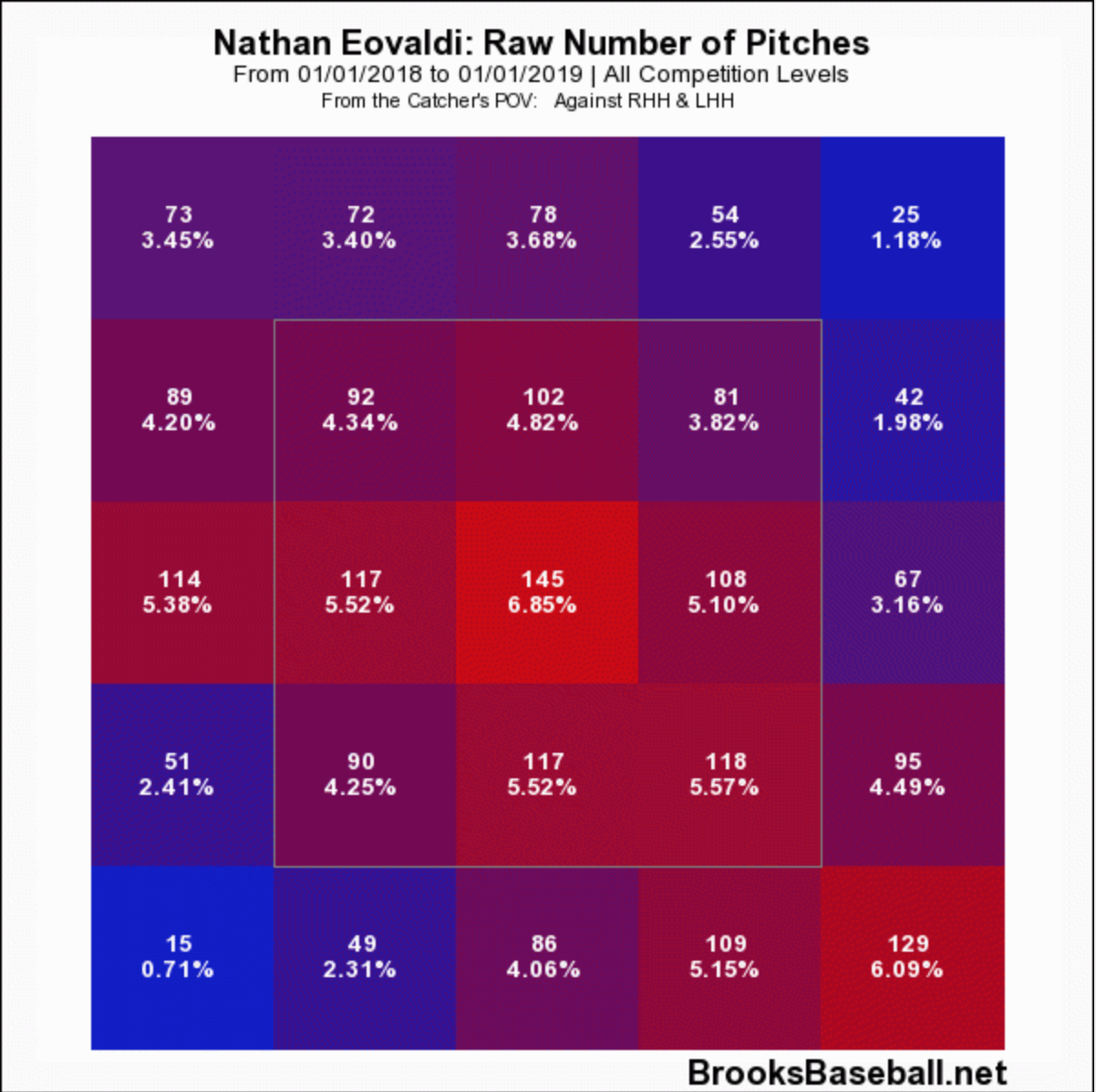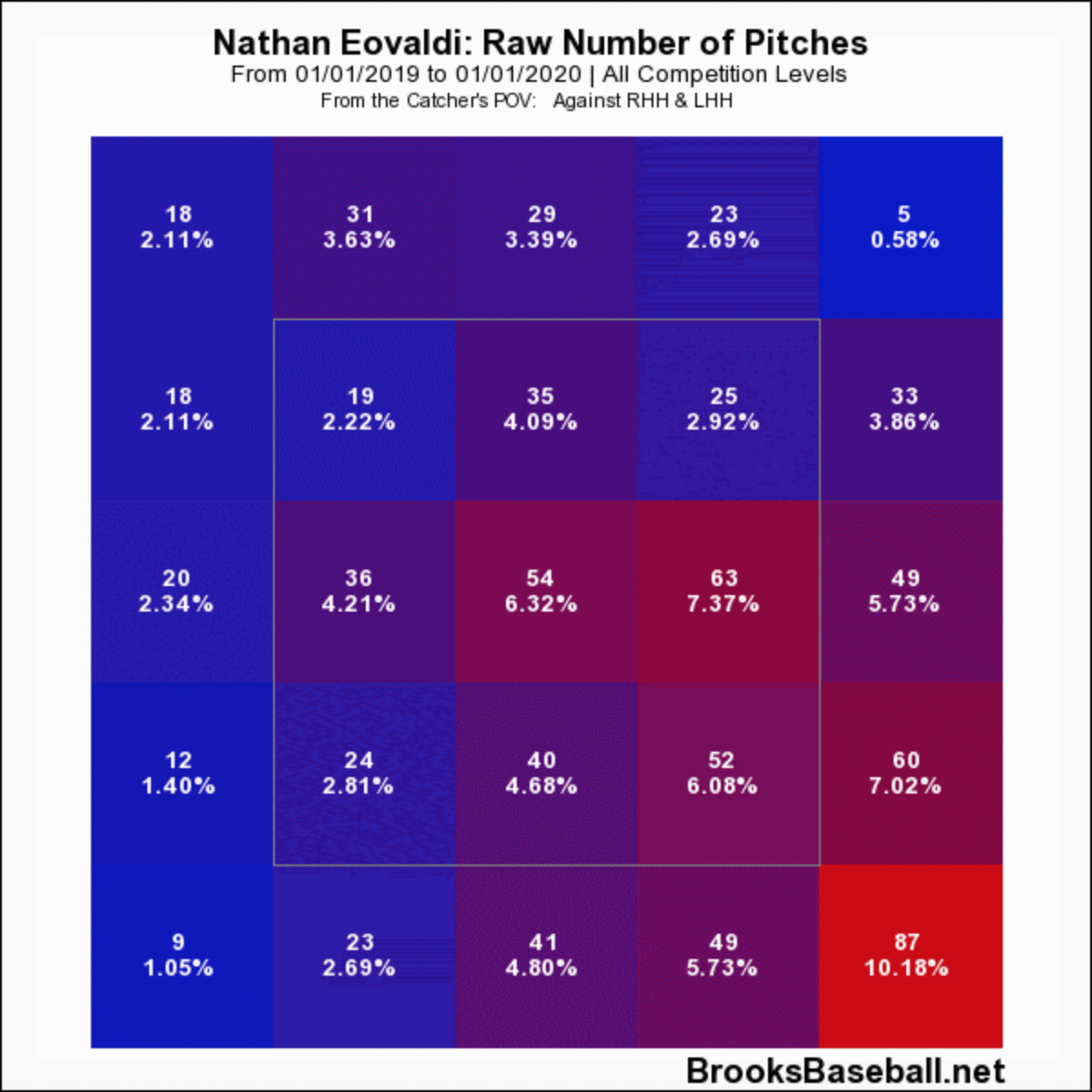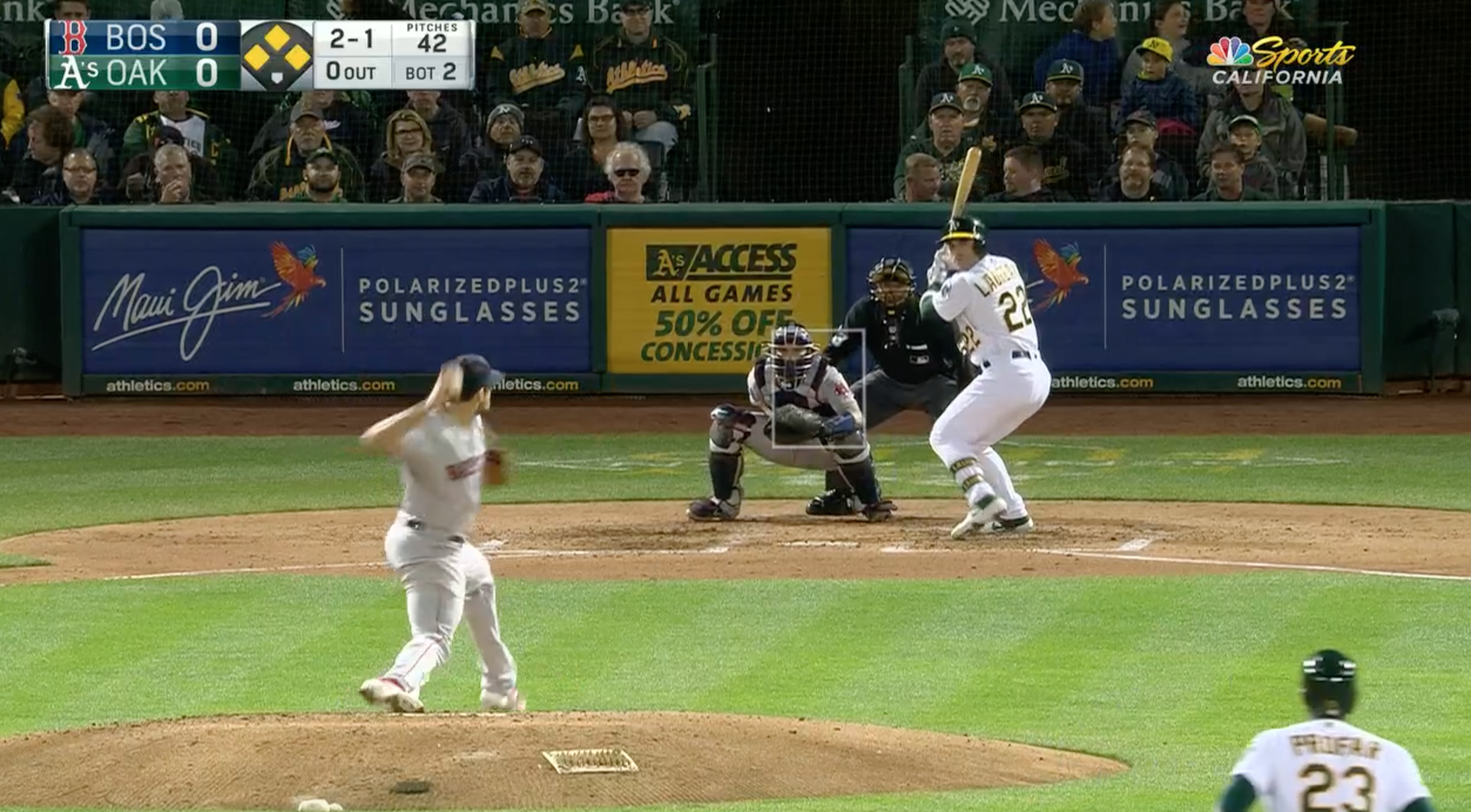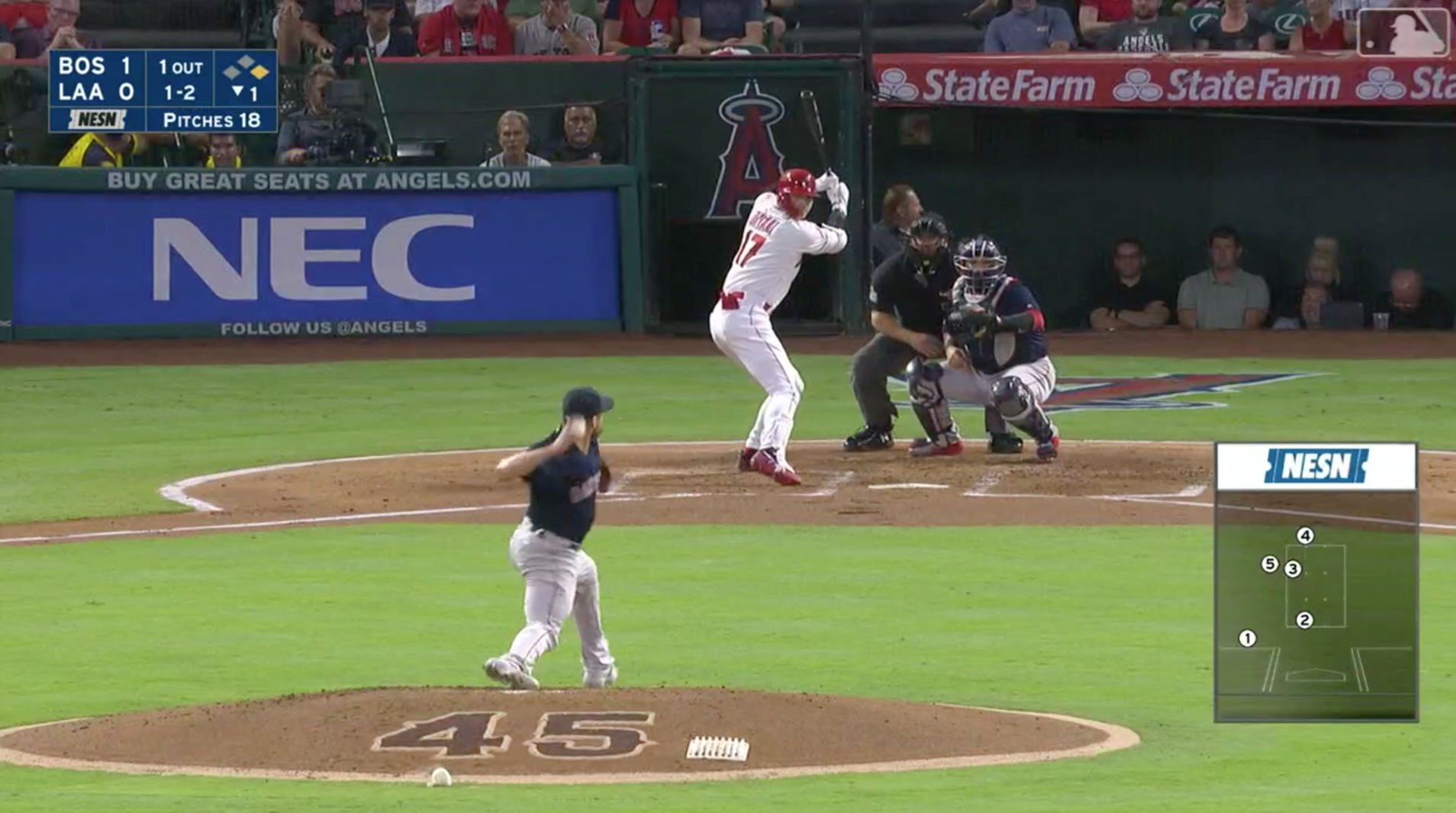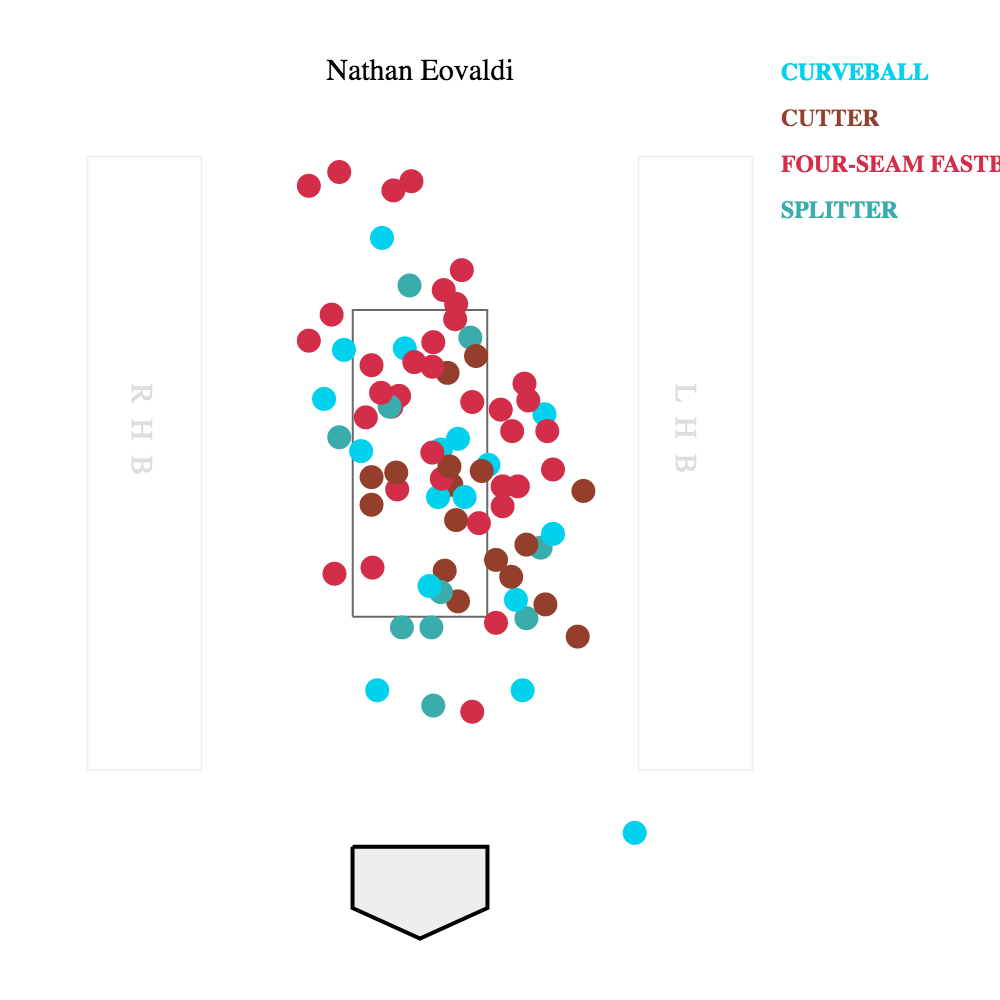Nathan Eovaldi had finally reached the mountain top and gone full circle in the process. Rejoicing with his teammates after the Boston Red Sox had won the 2018 World Series, he did so on the mound of the team that drafted him a decade earlier – the Los Angeles Dodgers. The path to this moment was long and tumultuous.
Even though he was seemingly destined to be a centerpiece of Los Angeles’ success, Eovaldi was traded midseason to the Miami Marlins, as the Dodgers made their push to win a title by going all-in for superstar Hanley Ramírez. With the Marlins, Eovaldi posted a cumulative 4.10 ERA with an exorbitant 1.36 WHIP added with a paltry 6.4 K/9. For a man that hailed from Alvin, Texas, boasting a 100 mph fireball backed by a ferocious grunt, this was not going to cut it.
At the end of the 2014 season, Eovaldi was then traded again to the New York Yankees – along with now household name Domingo Germán – in exchange for Martín Prado and David Phelps. By developing a splitter, Eovaldi rebounded winning 23 games in two seasons, despite the fact it was backed by a slightly higher 4.45 ERA and 1.39 WHIP – though with a slightly higher 7.0 K/9. Unfortunately, he hit another roadblock – a second Tommy John surgery.
The Tampa Bay Rays took a flier that offseason, knowing fully well Eovaldi would miss the 2017 season. By 2018, Eovaldi had finally felt healthy and developed a cutter in the process. Riding the new pitch with his blazing fastball and the rest of his eccentric repertoire, the strapping right-hander was able to strike out a career-high 8.4 K/9, complemented with a 3.81 ERA, 0.982 WHIP, and 1.3 BB/9. Add that all up and you’ll end up becoming the Red Sox’ biggest acquisition at the summer deadline in a title destined season. After dismantling the Yankees in his first couple of starts after the trade, he rode the momentum by dominating them again in the ALDS, doing the same to his hometown Houston Astros in the ALCS, before becoming a relief ace in the World Series – then getting paid a handsome four years and $70 million dollar deal during free agency.
However, like many of the Red Sox starters to start 2019, it was a struggle for Eovaldi to find the same form. When it seemed like he finally figured it out against the Yankees on April 17th, throwing six innings only giving up an unearned run, Eovaldi then missed the next several months after having another elbow surgery – just another chapter in his extended troubles due to injury. Now sitting with a career-worst 6.23 ERA, Eovaldi is now once again trying to find what made him so successful. What will it take for him to regain last year’s magic?
The Cutter Isn’t The Same
As this season has progressed, Eovaldi’s pitch mix has evolved.
| April | July | August | September | |
| FA% | 38.9 | 45.6 | 44.1 | 42.1 |
| FC% | 27.5 | 28.2 | 21.6 | 17.1 |
| CU% | 9.5 | 19.4 | 21.0 | 13.2 |
| FS% | 16.1 | 6.8 | 13.0 | 27.6 |
| SL% | 7.9 | – | 0.3 | – |
Even though his only start of September was last night, it’s still representative of the changes Eovaldi has made. There have been increases to the usage of the curveball and splitter, including completely eliminating the slider. Though the most jarring change is certainly the massive decrease in the usage of the cutter.
For those of you who need a refresher of what that cutter looks like, here it is.
For a pitch that moves that much at that speed, it’s remarkable how Eovaldi has decreased its usage so greatly. Part of that comes from a lack of good location. Here we see the placement of cutters from this season compared to last.
2018
2019
In 2018, Eovaldi was able to throw the cutter in the zone more often than he has this season. Furthermore, you can notice the zone just off the plate to the right nearly doubling in frequency compared to last season, speaking to a lack of command.
Location, Location, Location
After seeing an increase in the number of cutters landing outside of the zone, I started to wonder if there was a larger issue with command rather than just losing feel of the cutter.
Over his career, Eovaldi has generally struggled with throwing strikes but made significant strides in that department last season.
| 2011 | 2012 | 2013 | 2014 | 2015 | 2016 | 2018 | 2019 | |
| BB% | 13.7 | 8.9 | 8.9 | 5.0 | 7.3 | 7.6 | 4.4 | 10.3 |
| Zone% | 44.2 | 46.8 | 48.2 | 50.6 | 47.7 | 47.2 | 48.6 | 42.5 |
This is backed by the number of waste pitches Eovaldi has thrown.
| 2011 | 2012 | 2013 | 2014 | 2015 | 2016 | 2018 | 2019 | |
| Waste Pitch% | 8.6 | 7.0 | 6.0 | 6.4 | 8.5 | 8.3 | 5.2 | 8.2 |
The importance of tracking these waste pitches is that they essentially add no value to the at-bat. Since they are easy takes for the hitter, it simply puts the hitter in more favorable counts and thus in a better situation to succeed. Notice how his best season, last year, has the lowest percentage of waste pitches.
This season, he’s got one of the highest waste pitch rates of his career and the results follow. Though from one season to the next to nearly double in that rate, there has to be some explanation.
Eovaldi’s mechanics are rather unique.
Look at how his body rotates heavily in favor of the first-base line. This is a direct result of how his left foot lands.
You can see how he seems to land with his heel. Most pitchers land on the balls of their feet, allowing them to have a braced front leg thus allowing themselves to follow through going towards the plate. By landing on his heel, Eovaldi does not have that braced front leg – it’s hyperextended.
This forces him to have more momentum going side to side rather than towards the plate. Of course, by having such a rotation in the body and throwing as hard as Eovaldi does, control was never something he boasted.
Though, last season, Pedro Martinez noticed his landing foot and worked with Eovaldi on landing more on the balls of his feet rather than the heel.
Not that he’s necessarily landing on the balls of his feet here, but with slightly more momentum heading towards home plate, Eovaldi was thus able to post a career-low walk rate and pitch with the results he wanted.
It also allowed Eovaldi to command the zone far better than he has in his entire career.
This season, there’s been a weird mixture of landing results and therefore inconsistent command – particularly a decreasing number of pitches at the bottom of the zone.
In an April start against Oakland, it seems that Eovaldi landed with the balls of his feet rather than his heel – seemingly a good thing. Though his control wavered as he walked four hitters that start.
Now, in his penultimate start against the Los Angeles Angels, you can see how he seemingly reverted back to his old ways – heel first.
With the known results of each of those starts, it’s easy to just say he finally found something that worked for him. Even then, I still don’t think his command is at nearly the level it should be and where it was last season.
There are a number of hung curveballs – one ended up for a home run off the bat of Brian Goodwin – while also leaving a number of cutters in the middle of the plate. Though most importantly, there are hardly any low pitches – and the few that are yanked glove side. This happens when you can’t finish over your front leg.
As a result, Eovaldi ended up throwing roughly five pitches per hitter – as opposed to the slightly below four pitches per plate appearance on average last season. Lacking the efficiency has really hurt the Red Sox, as Eovaldi, therefore, does not get the length in his starts that he should despite being on a limited pitch count.
Fantasy Impact
Before I fully move on, let’s take Eovaldi’s start last night against the Minnesota Twins. He threw 76 pitches over five innings – an improvement over the 81 pitches over four innings against the Angels the prior start. While statistically it shows improved efficiency, it was not necessarily because of Eovaldi that this was the case. The Twins were incredibly aggressive, swinging at many pitches early in the count as Eovaldi only had to throw 55 pitches through the first four innings. When the Twins’ hitters became more patient, Eovaldi quickly walked the bases loaded, though luckily escaped the jam while only giving up one run by getting C.J. Cron to ground into a double play and Jonathan Schoop to subsequently fly out.
To finish the regular season, Eovaldi faces the following opponents.
| Starts | |
| Week 23 | v TOR |
| Week 24 | v SF, @TB |
| Week 25 | v BAL |
Given Eovaldi’s season-long command issues, it would be helpful to see where these teams stand in terms of walk rate.
| BB% (Team Rank) | |
| v MIN | 8.1 (20th) |
| v TOR | 8.3 (18th) |
| v SF | 7.7 (22nd) |
| @TB | 8.6 (16th) |
| v BAL | 7.2 (26th) |
I left the Twins’ walk rate in there as a deterrent for using the walk rates as a way to get around Eovaldi’s struggles. Even though the Twins are leaps and bounds ahead of any of the remaining offenses he faces, it still does not mean he’s going to have success just because of the walk rate. If Eovaldi can’t locate more effectively he’s going to continue to have these short outings while walking the park.
Unless you are truly desperate, I do not find the need to add Eovaldi just because of his remaining schedule. Though given his stuff, it would be wise to track Eovaldi’s pitch chart after his next start against the Toronto Blue Jays. If you see fewer pitches in the middle of the plate – or yanked to Eovaldi’s glove side – the resulting improved command is likely derived from landing better with his leading foot.
With Boston’s devastating loss last night, the chances at the last Wild Card slot went from slim to practically non-existent. The one positive that could come from a season that’s become the antithesis of the prior could be getting Eovaldi back to his former glory.
(Photo by Gregory Fisher/Icon Sportswire)


